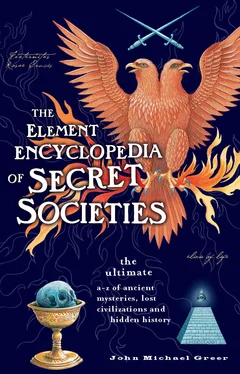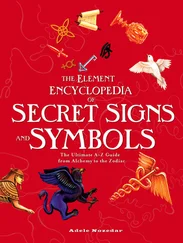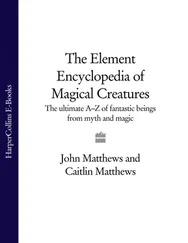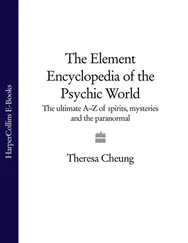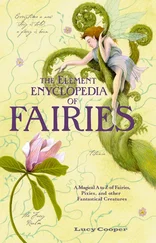The Element Encyclopedia of Secret Societies
John Michael Greer
the ultimate
a-z of ancient mysteries, lost civilizations and forgotten wisdom

Dedication Dedication Introduction A B C D E F G H I J K L M N O P R S T U V W Y Z Bibliography Copyright About the Publisher
On a spring afternoon some years ago, as I waited in the anteroom of an aging lodge building for my initiation into one of the higher degrees of a certain secret society, an elderly man in the full ceremonial uniform of that degree came in and looked at me for a long moment. “You know, John,” he said finally, “you must be the first man ever initiated into this degree who wears his hair in a ponytail.”
“Yes,” I said, “and we’d better hope I’m not the last, either.”
He nodded after a moment and went past me into the lodge room, and the ceremony began a few minutes later. The old man’s name was Alvin Gronvold; during the few years I knew him before his death, he was a friend and mentor as well as a lodge brother. To him, and to all the men and women of his generation who kept the secret societies of the western world alive when they were ignored, ridiculed, or condemned by almost everyone else, this book is dedicated.
Cover Page
Title Page The Element Encyclopedia of Secret Societies John Michael Greer the ultimate a-z of ancient mysteries, lost civilizations and forgotten wisdom
Dedication Dedication Dedication Introduction A B C D E F G H I J K L M N O P R S T U V W Y Z Bibliography Copyright About the Publisher On a spring afternoon some years ago, as I waited in the anteroom of an aging lodge building for my initiation into one of the higher degrees of a certain secret society, an elderly man in the full ceremonial uniform of that degree came in and looked at me for a long moment. “You know, John,” he said finally, “you must be the first man ever initiated into this degree who wears his hair in a ponytail.” “Yes,” I said, “and we’d better hope I’m not the last, either.” He nodded after a moment and went past me into the lodge room, and the ceremony began a few minutes later. The old man’s name was Alvin Gronvold; during the few years I knew him before his death, he was a friend and mentor as well as a lodge brother. To him, and to all the men and women of his generation who kept the secret societies of the western world alive when they were ignored, ridiculed, or condemned by almost everyone else, this book is dedicated.
Introduction
A
B
C
D
E
F
G
H
I
J
K
L
M
N
O
P
R
S
T
U
V
W
Y
Z
Bibliography
Copyright
About the Publisher
Behind the ordinary history of the world, the facts and dates that most of us learn in school and forget immediately thereafter, lies a second, hidden history of secret societies, lost civilizations, sinister conspiracies and mysterious events. This shadow side of history has become a pervasive theme in the popular culture of recent years. In an age of politicians who manipulate facts for their own benefit, scientists who invent data to advance their careers, and scholars who let their prejudices all too obviously shape their judgment, only the foolish – or those with agendas of their own – accept the claims of authority blindly.
Like the Holy Grail of legend, though, the truth behind commonly accepted realities is easier to seek than to find. Since the 1960s, when alternative visions first broke through into the cultural mainstream of the western world, the hidden history of the world has become the storm center of a flurry of uncertainties. What were the real origins of Christianity, the Freemasons, or the French Revolution? Do secret societies actually control the world, and if so, what do they plan to do with it? Does the hidden hand behind history belong to a cartel of bankers, a Gnostic secret society, the Catholic Church, the benevolent masters of the Great White Lodge, alien reptiles from another dimension, or Satan himself? Look at any five books or documentaries on the subject, and you can count on at least six mutually contradictory answers.
Fortunately, there are pathways through the fog. No secret society is completely secret, and even the murkiest events of hidden history leave traces behind. Theories about the shadow side of history have a history of their own. Current ideas about the Bavarian Illuminati or the lost continent of Atlantis, to name only two examples, mean one thing in the hothouse environment of the modern alternative-realities scene, and quite another in context, as ideas that have developed over time and absorbed themes and imagery from many sources. Errors of fact and disinformation can often be traced to their origins, and useful information unearthed from unexpected sources. All this can be done, but so far, too little of it has been done.
The Element Encyclopedia of Secret Societies is an alphabetic guide to this shadow side of history, and it attempts to sort out fact from the fictions, falsifications, and fantasies that have too often surrounded the subject. True believers and diehard skeptics alike may find themselves in unfamiliar territory, for I have not limited myself to the usual sources quoted and challenged in the alternative reality field; the material in this book has been gathered through many years of personal research, using scholarly works as well as more unorthodox sources of information. A bibliography at the end, and the suggestions for further reading following many of the articles, will allow readers who are interested in checking facts to do so.
Another resource I have used, one that will inevitably raise the hackles of some readers, stems from my personal involvement in secret societies and the occult underground of the modern world. I am a 32° Freemason, a Master of the Temple in one branch of the Golden Dawn tradition and an Adeptus Minor in another, the Grand Archdruid of one modern Druid order and a member of three others, and an initiate of more than a dozen other secret societies and esoteric traditions. The world of hidden history has been a central part of my life for more than 30 years. I make no apologies for this fact, and indeed some of the material covered in this book would have been much more difficult to obtain without the access, connections, and friendships that my participation in secret societies has brought me.
Many people have helped me gather information for this volume or provided other assistance invaluable in its creation. Some of them cannot be named here; they know who they are. Among those who can be named are Erik Arneson, Dolores Ashcroft-Nowicki, Philip Carr-Gomm, Peter Cawley, Patrick Claflin, Gordon Cooper, Lon Milo DuQuette, John Gilbert, Carl Hood Jr., Corby Ingold, Earl King Jr., Jay Kinney, Jeff Richardson, Carroll “Poke” Runyon, Todd Spencer, Mark Stavish, Donna Taylor, Terry Taylor, and my wife Sara. My thanks go with all.
Note:Readers will notice the occasional use of a triangle of dots instead of an ordinary period. This is because I have followed the Masonic punctuation practice when abbreviating Masonic terms.
A member of a lodge of Masons who is not an operative Mason – that is, a working stonemason – but has joined the lodge to take part in its social and initiatory activities. The first accepted Masons documented in lodge records were Anthony Alexander, Lord William Alexander, and Sir Alexander Strachan of Thornton, who became members of the Edinburgh lodge in 1634. Sir Robert Moray, a Hermeticist and founding member of the Royal Society, became a member of the same lodge in 1640; the alchemist and astrologer Elias Ashmole was another early accepted Mason, joining a lodge in England in 1646. They and the thousands who followed them over the next century played a crucial role in the transformation of Freemasonry from a late medieval trade union to the prototypical secret society of modern times. See Ashmole, Elias; Freemasonry; Moray, Robert.
Читать дальше
